So there you are on this quiz show, really just happy to have met Alex. But somehow you’ve managed a slim lead going into Final Jeopardy and Johnny Gilbert announces that the category is Chilean Cuisine. How much would you risk?
Well if you were Don Day, you’d risk a big fat zero. Because if the answer wasn’t sea bass, there’s a slim chance in hell I’d be coming back the next day.
Chile. I’ve always wanted to look like the country (tall and slim). And I’ve always wanted to go there. But not for any really solid reasons. Only the liquid variety of cuisine. Because, except for wine, when it comes to famous foods from Chile, I am almost totally ignorant. But I have always wanted to change that ignorance to bliss.
I was in the Centro location of La Burger and who should I run into but Carolina Echeverria, the woman who owns the new franchise and one of the four good looking women (attractive enough that Don Day’s Wife will give up an episode of The Good Wife to ensure I don’t go to the restaurant alone) who you’ll find running Las Cuatro Milpas. Somehow we started talking about Chilean dishes but I wasn’t exactly sure what Carolina’s connection to Chile is. Maybe a parent. Maybe an ex-husband. Maybe a few bottles of Chilean wine. Anyway, next thing I knew, she’d agreed to cook a Chilean meal for The Gentlemen Who Lunch.
The plan was to start with pisco sours. This is the national alcoholic beverage of Chile. This is also the national alcoholic beverage of Peru. And, frequently, when alcoholic beverages and two nationalities are involved, arguments break out.
The pisco sour is the cocktail that rates about four times as many words on Wikipedia as the martini. Those words are mostly about who invented it, Chile or Peru, and which version is best (the Chilean version omits the Angostura bitters and the egg whites). The controversy is almost as heated as if the two countries were in the final of the World Cup.
Luckily I didn’t have to take sides. There was a national strike in Mexico and a parade in San Miguel. Whoever wrote “I Love A Parade” obviously didn’t ever have brass bands and clowns block them from a liquor store. Unable to reach the only pisco stock in town, Las Cuatro Milpas improvised. I don’t think any of the guys objected to the (extremely good) margarita replacements.
Like every country in the Americas, Chile had influences from virtually every European country that encouraged explorers. Which is not hard to guess when the one of the founding fathers in a country conquered and mostly settled by Spaniards is a guy called Bernard O’Higgins. Italian, German, Basque, French and Greek dishes all became part of the everyday diet of Chilenos but slowly but surely Chile built its own identity around the bounties from one of the world’s longest seacoasts (sorry, a Canadian can’t avoid mentioning that Canada has the longest) and the corn, beans and potatoes that were native to the land.
We started with one of those big three of crops. In the form of a bean salad. Carolina had asked me for advice on what to start with, empanada de pino or ensalada de porotos. I knew I’d probably prefer the beef empanadas and I knew the guys would as well. But I also knew I couldn’t help thinking of Argentina or even Mexico if it was empanadas and I knew the guys would as well. The bean salad would have a better chance of representing Chile.
The beans were what I would call Lima beans and I must say, knowing that brussels sprouts aren’t called brussels sprouts in Bruxelles, I’ve always wondered if Lima beans are called Lima beans in Lima. Anyway, that’s not what Carolina Echeverria called them. Probably because Chileans believe they originated on the south side of the border. Carolina, who by now I had learned had a Chilean father and had lived for some time in Chile, called them alubia grande which, to me, simply translates as large bean.
The alubias were simply teamed with shreds of onion and cilantro on a bed of lettuce and topped with olive oil, red vinegar, salt and pepper. Sometimes simple is best.
Our main course was pollo arvejado. Carolina told me that this chicken stew can be found on Chilean tables almost once a week. It’s pure comfort food, and it reminded me of how chicken stew has somehow disappeared (hope you can detect the sad sigh in my voice) from most North American diets. The embellishments to arvejado are simple. Peas, carrots, some minimal spices. The difference is the broth. The chicken is stewed in wine. No, I don’t mean two parts water and one part wine. Or three parts chicken stock and one part wine. I mean Sauvignon Blanc and absolutely no other liquid. The result is a citrus acidity that takes comfort food up to classy food.
The starch was just as simple. Steamed rice with nothing but a little butter and a little salt. Inexpensive ingredients and simple preparation aren’t exactly an easy way to impress a roomful of foodies. But I think the four good looking ladies aced it.
To accompany the lunch we drank a Vistamar Brisa Chilean Carmenere.
Carmenere has had a history that’s like some people I know. Quite popular in their innocent youth. Forgotten in their married middle ages. And then hot as a firecracker as single-again seniors.
It’s an interesting red wine. One of the original six Bordeaux grapes, it virtually disappeared from France. And was also lost in Chile because of its confusion with Merlot. Now it’s considered Chile’s national grape. I’m still not sure which is which in a side-by-side taste between Carmenere and Merlot. But vive the lack of difference. Like Merlot, Carmenere is an excellent luncheon choice especially if you’re going to match a red rather than a white with chicken stew.
Dessert was a Chilean specialty called torta mil hojas which translates as cake of a thousand sheets. It reminded me a lot of Greek baklava and a little of a French millefeuille or Napoleon. Though it obviously doesn’t have a thousand layers of pastry, it did have seven (though the guys somehow counted ten or twelve) which means more rolling for the baker than a night at a Vegas craps table.
There are a few variations on torta mil hojas and Carolina’s version comes from her great aunt. Between the layers of flaky pastry were what Mexicans call dulce de leche and Chileans call manjar blanco. And in addition to that innovative treatment of sweetened milk was a smear of peach jam. Chirimoya would have been Carolina’s choice of fruit for the cake but it’s hard to find in San Miguel even when it’s in season.
Back in the seventeenth century, pastry was popularized in Chile by the Roman Catholic nuns who baked it in convents. In tribute, a Chilean saying is “tiene mano de monja” (she has the hands of a nun) and refers to someone who is exceptional at baking or cooking in general. From now on (well if I can get away with it) I will call the ladies of Las Cuatro Milpas, Sister Leticia, Sister Carolina, Sister Lucia and Sister Daniela.
To accompany the dessert there was a little digestif served in a liqueur glass. It’s a non-alcoholic beverage which, though it seems a shame to dirty a shot glass for something without a kick, is a pleasant tea-like drink. It’s a staple at Las Cuatro Milpas that I think is often given to customers at the end of their meals (except perhaps the ones who compare the owners to nuns).
Carolina and I talked about why Chilean cuisine has never made a major mark on the world of food.
“I think it’s because it’s the tail of the world. So far away from everywhere and everyone else. Maybe we can do our little bit to give it the attention it deserves.”
Carolina told me she is going to feature the Chilean dishes we savored for the next few weeks at the restaurant. Which you should definitely go and try. For no other reason than you never know when you’re going to be on Jeopardy.
“Chilean cuisine? Let’s make it a true daily double, Alex.”
Las Cuatro Milpas is located at Barranca #42 at the corner of Montes de Oca in San Miguel de Allende, Mexico. The restaurant is open from 2:00 pm to 10:00 pm, every day but Sunday.


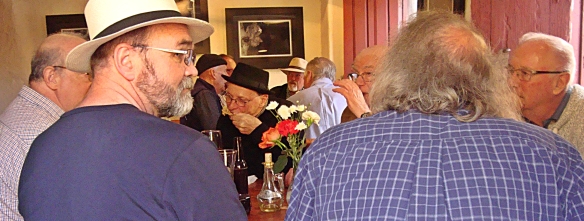
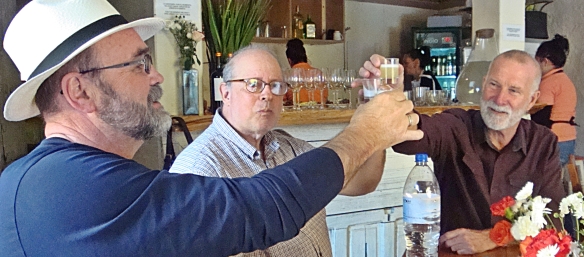
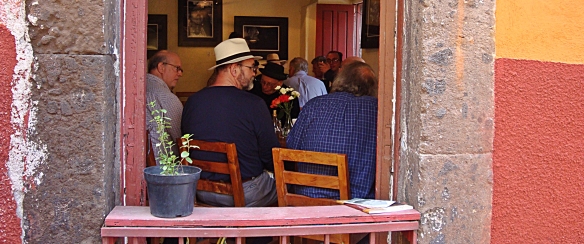


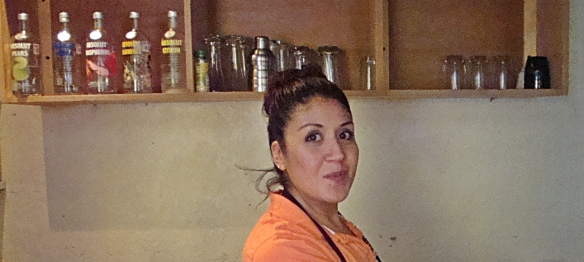

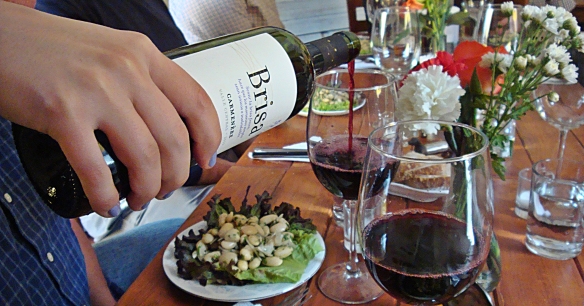
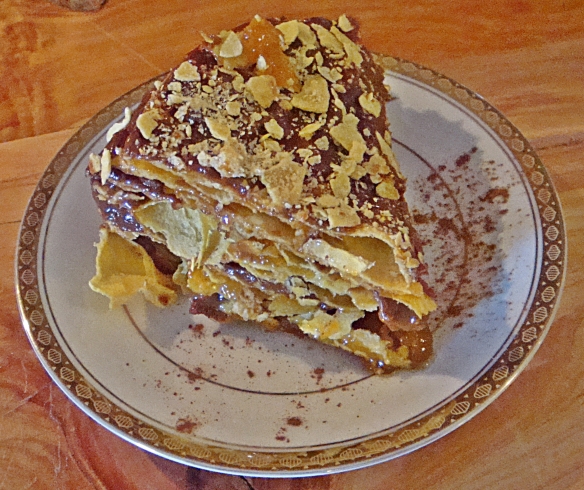
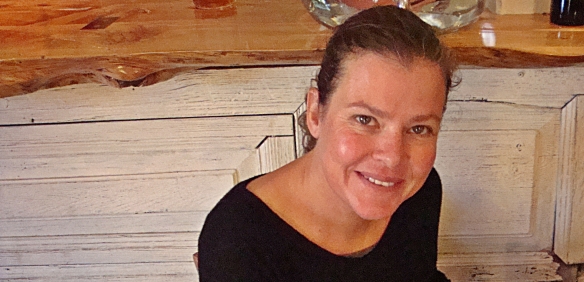
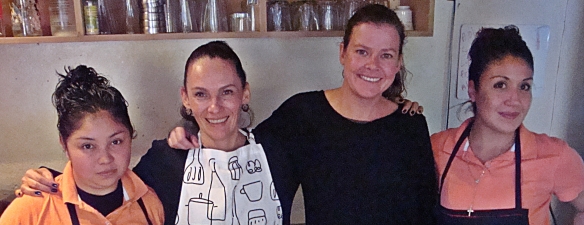

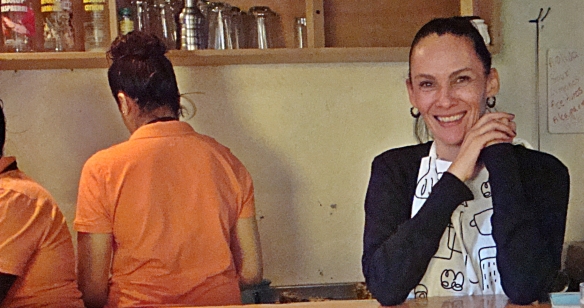
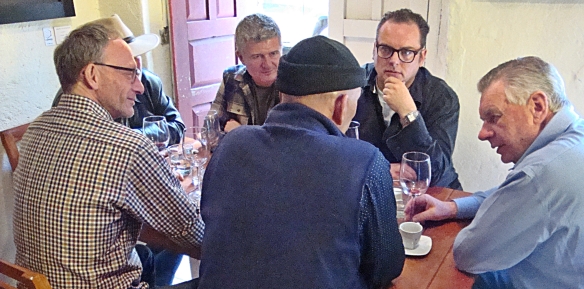
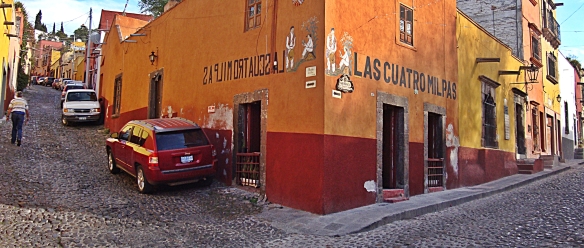
Recent Comments